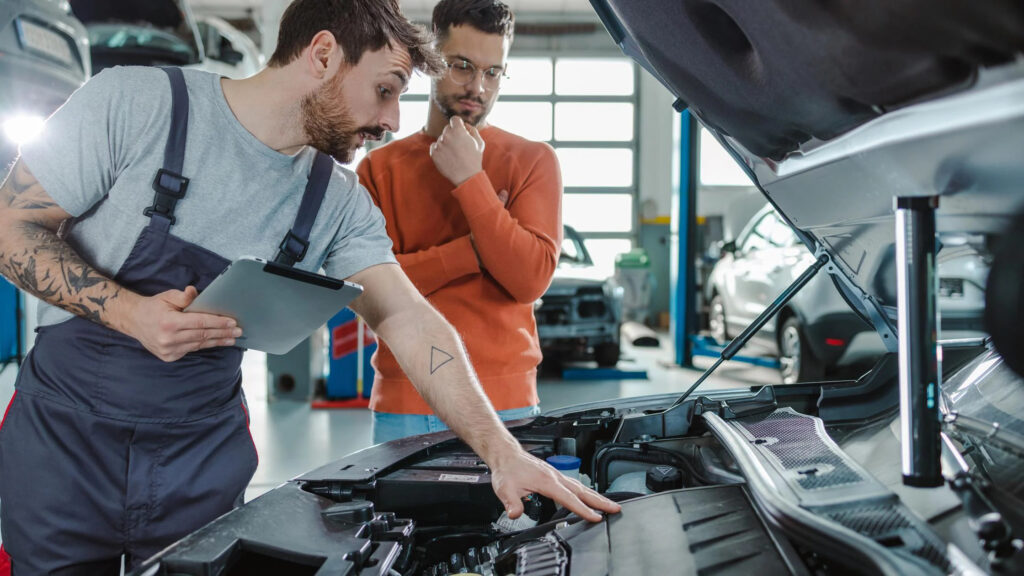
In the highly competitive automotive repair industry, efficient auto repair management can be the difference between a struggling business and a thriving one. With the growing demand for fast, reliable, and customer-centric automotive services, shop owners must implement comprehensive management strategies that optimize every aspect of their operations.
From customer interactions to inventory control, labor management to profitability tracking — we’re covering every essential area of auto repair shop management in this in-depth guide.
Understanding the Core of Auto Repair Shop Management
Auto repair management is the strategic coordination of personnel, processes, and resources to provide seamless automotive repair services. It blends technical precision with customer service excellence and operational efficiency.
Effective management ensures that:
-
Repair orders are handled efficiently
-
Technicians are productive and well-supported
-
Parts are always in stock
-
Customers leave satisfied and return for future services
Optimize Workflow with Modern Shop Management Software
One of the first steps in upgrading your shop is implementing auto repair shop management software. These tools streamline workflow and reduce manual errors.
Key benefits include:
-
Automated scheduling: Assign tasks based on technician availability and specialization
-
Digital repair orders: Replace paper with easily trackable digital records
-
Real-time updates: Technicians and front desk stay in sync
-
Customer communication tools: Send automatic texts or emails about service status
Popular solutions like Shop-Ware, Mitchell 1, and Tekmetric help manage everything from appointments to inventory, ultimately reducing downtime and increasing productivity.
Effective Inventory Management for Auto Repair Shops
Inventory issues can cripple your operations. Overstocking drains capital, while understocking leads to delays and unhappy customers. A balanced and automated inventory system ensures:
-
Just-in-time ordering
-
Automatic part restocking notifications
-
Barcode scanning for quick part identification
-
Parts tracking by vendor, brand, or vehicle type
An integrated system also provides data on fast-moving and slow-moving items, helping you optimize ordering decisions.
Improve Labor Efficiency and Technician Productivity
Your technicians are your greatest asset. Mismanaging their time directly affects your bottom line. Auto repair labor management involves:
-
Assigning tasks based on expertise
-
Monitoring time per job and setting benchmarks
-
Offering performance-based incentives
-
Scheduling regular training for new systems and diagnostics
Using productivity tracking tools, you can determine flag hours versus actual hours worked, helping to identify training needs or workflow adjustments.
Customer Experience: The Heart of Shop Success
Customers expect transparency, speed, and communication. A streamlined customer journey builds loyalty and increases repeat business.
Enhance customer satisfaction with:
-
Digital vehicle inspections (DVIs): Show customers exactly what needs fixing, building trust
-
SMS/email updates: Keep them informed throughout the repair process
-
Transparent pricing: Provide estimates before work begins
-
Online appointment booking and follow-ups
Building long-term relationships through professional service and communication increases referrals and online reviews, which boosts your visibility.
Boost Profitability with Smart Pricing and Cost Tracking
Auto repair shop profitability hinges on precise pricing and cost control. Shops must monitor labor costs, parts markups, and operating expenses consistently.
Best practices include:
-
Implementing tiered pricing based on technician experience
-
Using gross profit reports to analyze services and part margins
-
Reviewing parts vendors quarterly to ensure the best pricing
-
Offering maintenance packages or loyalty discounts to increase retention
Tools like QuickBooks or integrated accounting software help track financials, generate profit/loss statements, and manage payroll efficiently.
Marketing Your Auto Repair Shop for Local Visibility
A great shop is nothing without customers. A smart auto repair marketing strategy ensures your services are visible when locals search for “auto repair near me.”
Effective strategies include:
-
Google Business Profile optimization with regular photo and post updates
-
Collecting 5-star reviews and responding to them professionally
-
Local SEO with city/region-based keywords (e.g.,”“brake repair in Dallas”)
-
Email marketing with service reminders and seasonal offers
-
Social media campaigns to highlight staff, services, and satisfied customers
Combining digital outreach with physical presence (flyers, local sponsorships) increases brand recognition and foot traffic.
Utilizing Reports and KPIs to Guide Decisions
Data should drive your business decisions. Shop management tools offer real-time reporting on:
-
Technician performance
-
Job profitability
-
Return customer rates
-
Parts usage
-
Customer satisfaction scores
By setting and tracking Key Performance Indicators (KPIs), such as Average Repair Order (ARO), Car Count, and Gross Profit %, you can make smarter decisions and quickly course-correct if needed.
Ensure Compliance and Safety Standards
Maintaining a safe and compliant workplace protects your employees and reduces liabilities.
Necessary compliance measures include:
-
OSHA guidelines for auto shops
-
Proper handling and disposal of hazardous materials
-
Regular tool and equipment inspections
-
First-aid readiness and employee safety training
Documenting safety protocols and conducting routine audits helps create a safe environment and builds employee confidence.
Building a High-Performance Team Culture
A productive auto repair shop thrives on team cohesion and communication. Investing in your staff pays long-term dividends.
Ways to foster a great team:
-
Conduct weekly check-ins or morning huddles
-
Encourage feedback and ideas from technicians
-
Recognize top performers publicly
-
Offer continuous education and certification opportunities
-
Create a clean, organized, and comfortable workspace
A well-trained and motivated team results in faster repairs, higher quality service, and satisfied customers.
Conclusion
Auto repair management is about much more than fixing cars — it’s about building a well-oiled operation that runs efficiently, satisfies customers, and scales profitably. By embracing modern software, optimizing workflow, and prioritizing team development, your shop can outperform competitors and thrive in a demanding industry.




